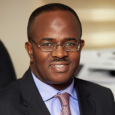Neelam, perhaps many people still associate BlackBerry with their famous smartphones. Could you shed more light on the company’s activities today and on its transformation over the years?
When they ask me this question, most people indeed use the word ‘transformation’. Rather, I like to refer to our journey as an ‘evolution’. BlackBerry was founded in 1984. We started off with one of our first innovations as an IoT piece of technology with which we provided security and connectivity to customers. We had a number of innovations after that, before developing the BlackBerry smartphone: all of them grounded in security and connectivity. The reason why we were so successful with the smartphone was that it allowed people to connect better.
As our hardware business began to decline about 10 years ago, we had our new CEO John Chen join the company. He realized that the DNA of the company was security and connectivity, which had to be retained. But he also saw that from an industry perspective we needed to evolve to be a software company, as our differentiation was increasingly expressed in that segment of the technology space. So we took the core of the company and applied it to any type of endpoint, rather than just phones. It is fair to say that our activities now fall into two main categories: cybersecurity and the Internet of Things (IoT). We are in cars, mobile devices, tablets, security cameras, healthcare devices, while remaining the same BlackBerry that people knew and loved and continue to trust nowadays.
How would you define the relationship between your current activities and sustainability?
Sustainability today is generally seen as climate action, which is certainly necessary and we all need to take action to address that problem. BlackBerry has done that, as we are carbon neutral today and we continue to take steps to advance our own carbon neutral position further as well as that of our customers.
Having said that, the word sustainability encompasses more than that, entailing the ensuring of a resilient future for the generations to come.

We see our technology in the IoT and cybersecurity spaces as being a key component of resilience.
As societies become more and more connected, that connectivity needs to be reliable. We saw in Canada last year when one of the network telecom providers had an outage and there was as a consequence that impacted normal life. That connectivity also has to be secure - we see cyberattacks on all sorts of endpoints every day. The other component is privacy - it must be an element of trustable connectivity for obvious reasons, but also for connectivity to really proliferate. The bigger benefits that we can realize from IoT in healthcare, education, in mobility and smart cities will emerge much faster if trust is guaranteed.
Could you elaborate on how BlackBerry helps its customers advance their carbon neutrality?
As we have evolved from hardware to being a software company, originally much of our portfolio was often on-prem. Over the years we have invested a lot of effort to change that and we are today in a place where all of our technology is available in the cloud. So we are working with our customers now to transition them to the cloud offering. There are some customers who have very high security requirements, particularly government agencies, who prefer to keep using on-prem, but they are the exception.
Beyond that, what commitments to the green transition are essential to BlackBerry?
We have a couple of different streams via which we target climate change. We are carbon neutral today and, since 2013, we have reduced our direct and indirect emissions by 88%. We offset the rest but not through buying carbon credits, not knowing what actually happens with them - we actually invest in specific programs, such as water wells in Rwanda or reforestation in the U.S and Canada. As a next step, we quantify and look at addressing our Scope 3 value chain emissions. That is a very difficult task for any company. We are very careful about the statements and commitments we make in that sense - we make sure all that we say is grounded in solid facts. This is a project in progress that will take us some time to accomplish fully.
Additionally, we are very proud of our partnerships with universities to figure out new use cases and implementations of our technology. One example is our collaboration with the University of Windsor - we identified a new use case for our BlackBerry clean water and flood risk AtHoc technology to support indigenous communities in Canada (as a first use case), who are highly affected by water security issues. This technology can be now deployed globally. So this stream of our work helps directly address climate-related issues, such as extreme weather events.
What are the key challenges for the tech industry in general to further the green transition?
The ability to offset carbon emissions is going to get saturated at some point. So we need to be thinking collectively on how to reduce emissions as an industry, rather than rely on offsets. Secondly, there are many conversations about technology enabling sustainability. But I see two potential issues with that: one is that many of the new technologies create their own, unique issues (EVs come to mind); secondly, we cannot realize the benefits of the IoT if we do not execute IoT as a single hyperconnected ecosystem because trust is not there - so that needs to be addressed too.
What final message would you like to send to everyone at the COP 28?
I encourage society to talk about sustainability in a much broader sense. We have to think about what will enable a secure and resilient future for generations to come. Every company needs to concentrate on the value they can deliver individually.






